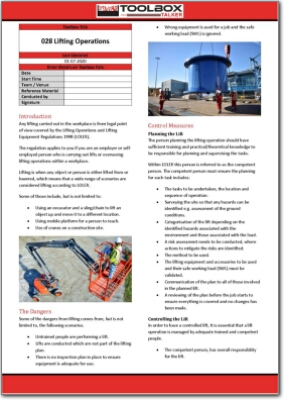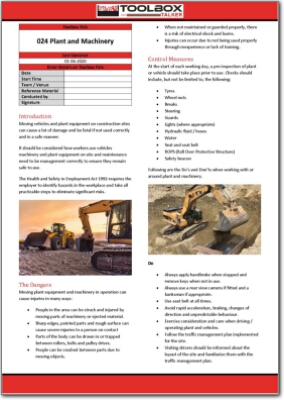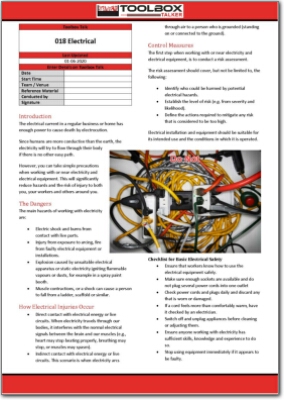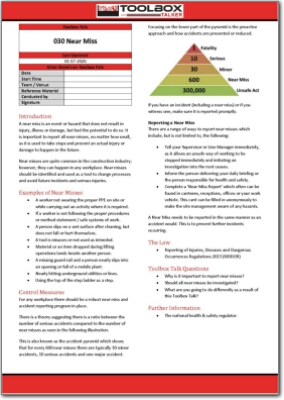Description
The reciprocating saw, also called a sabre or sabre saw, is intended for cutting material with the back-and-forth movements of its horizontal blade.
A reciprocating saw is mainly used to cut through hard construction materials and can cut through metal and wood very quickly. Reciprocating saws are most useful for making quick, crude cuts through surfaces. When using these powerful tools, you must follow some safety precautions.
The key hazards when using a reciprocating saw are, but is not limited to, the following:
- Exposed moving parts.
- Electrical hazard if powered through a cord.
- Cutting, impact and abrasion injuries.
Our reciprocating saw toolbox talk helps keep employees safe and reduce health and safety issues in workplaces where reciprocating saws are used as part day-to-day activities.
If you are considering our reciprocating saw toolbox talk, our Cable Management Toolbox Talk and Electrical Toolbox Talk might be of interest to you as well.
Items Covered in the Reciprocating Saw Toolbox Talk
All our toolbox talk is split up in these following sections:
- Introduction: Explanation of what a reciprocating saw is and in what connection it is used.
- The Hazards: Outline some of the common hazards in workplaces where reciprocating saws are used as part of the day-to-day activities.
- Control Measures: Defines the controls that should be implemented to mitigate any risks related to use of reciprocating saw.
- Toolbox Talk Questions: Include a few questions to validate attendees understanding of the toolbox talk.
- Further Information: Outline where additional information can be received, related to the topic covered in the toolbox talk.
Each of our toolbox talks include an additional page where relevant hazards on site can be identified and discussed, together with an attendance list where participants can be recorded and sign.
Purchase our Reciprocating Saw Toolbox Talk to keep your employees safe, or take advantage of our toolbox talk packages which contains a range of our toolbox talks at a reduced price.





